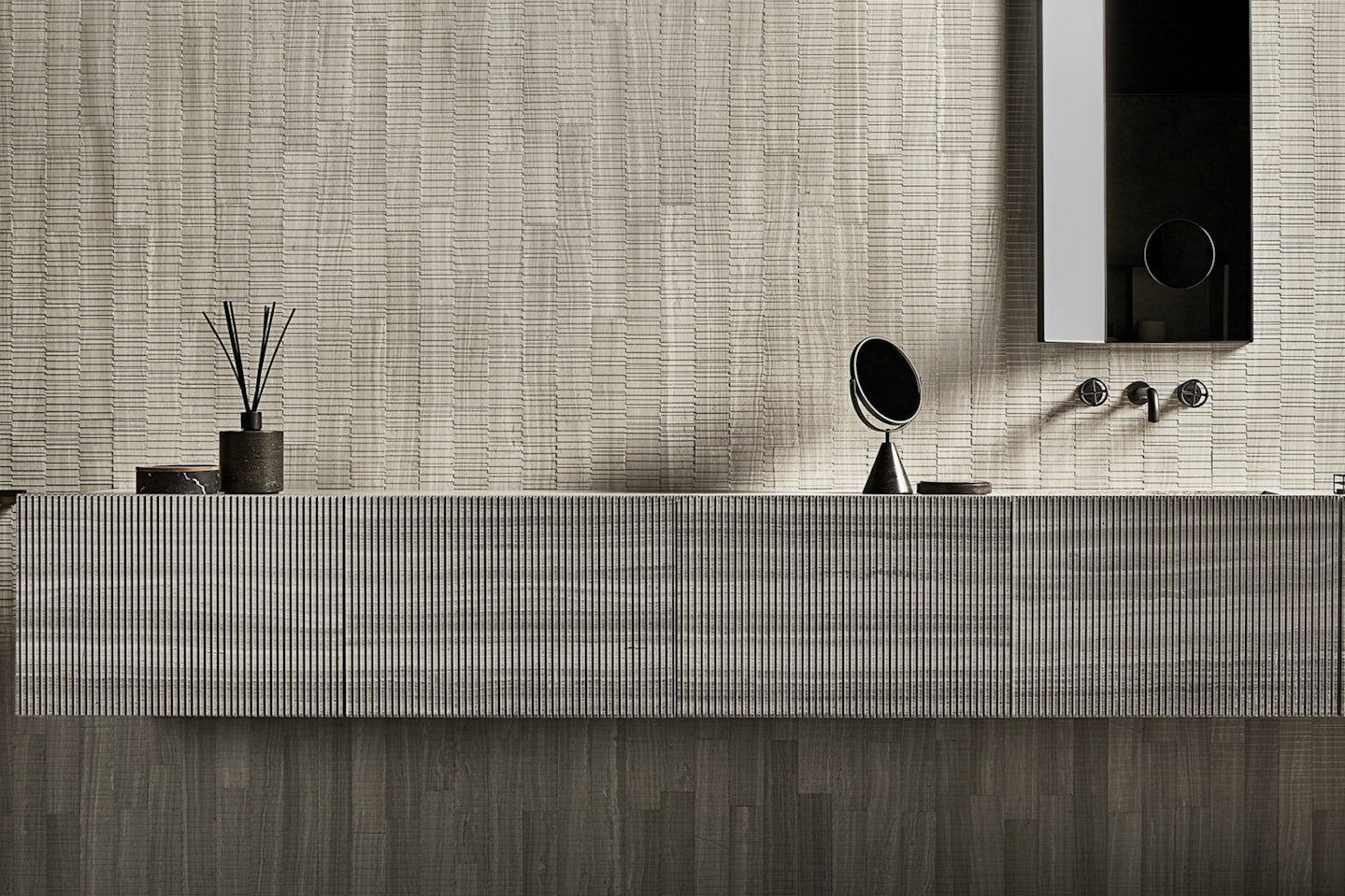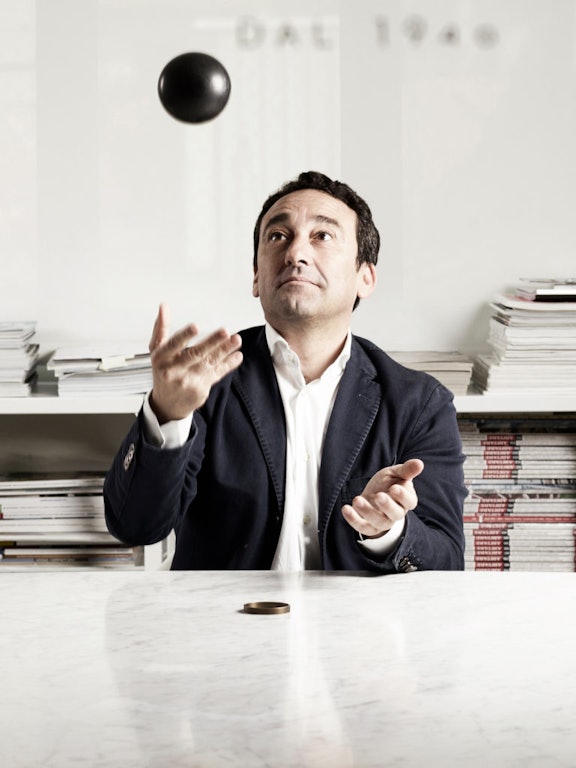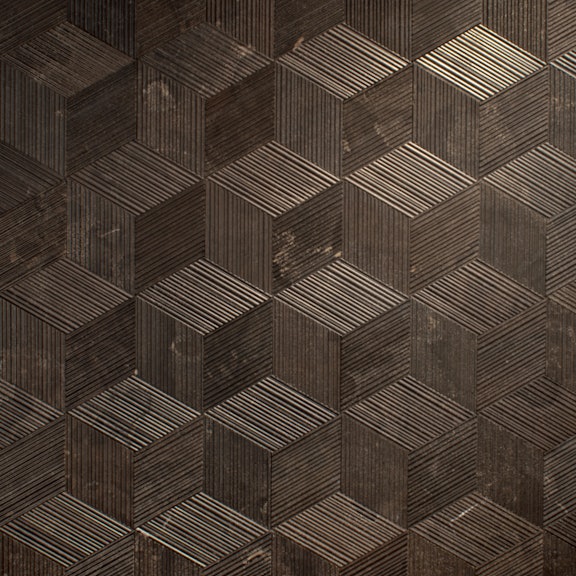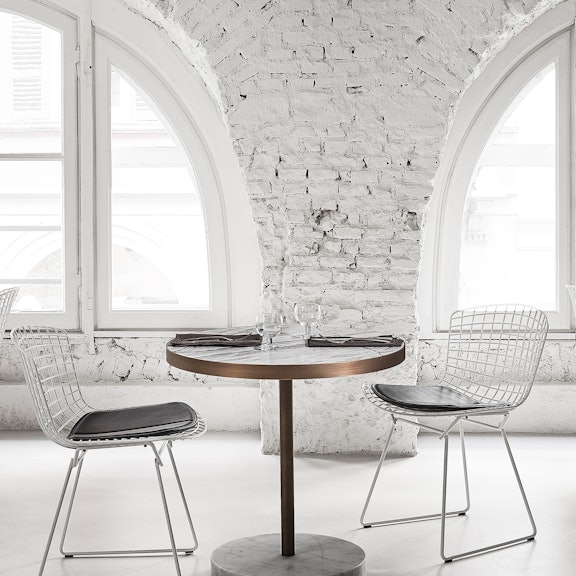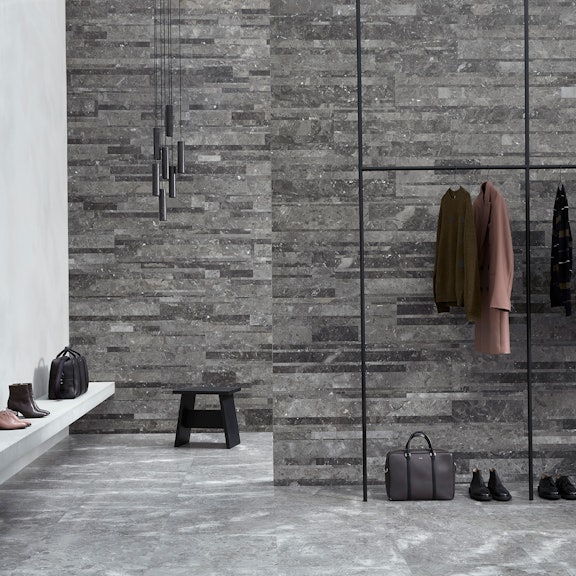Salvatori: the evolution of a brand
03.2022
"Dreaming is the first step to achieving something"
A conversation with Gabriele Salvatori.
In your view, what is it that makes natural stone so special?
Probably I’m biased, but I genuinely believe there is no product more beautiful. Aesthetics are always subjective, but I love the fact that some stones are so simple and classical, and then there are others where Mother Nature has created extraordinary swirls and veins and colours which could be works of art. And then there is the history – each block, each slab, every tile or piece is absolutely unique, created over millions of years. I find this incredible and quite humbling.
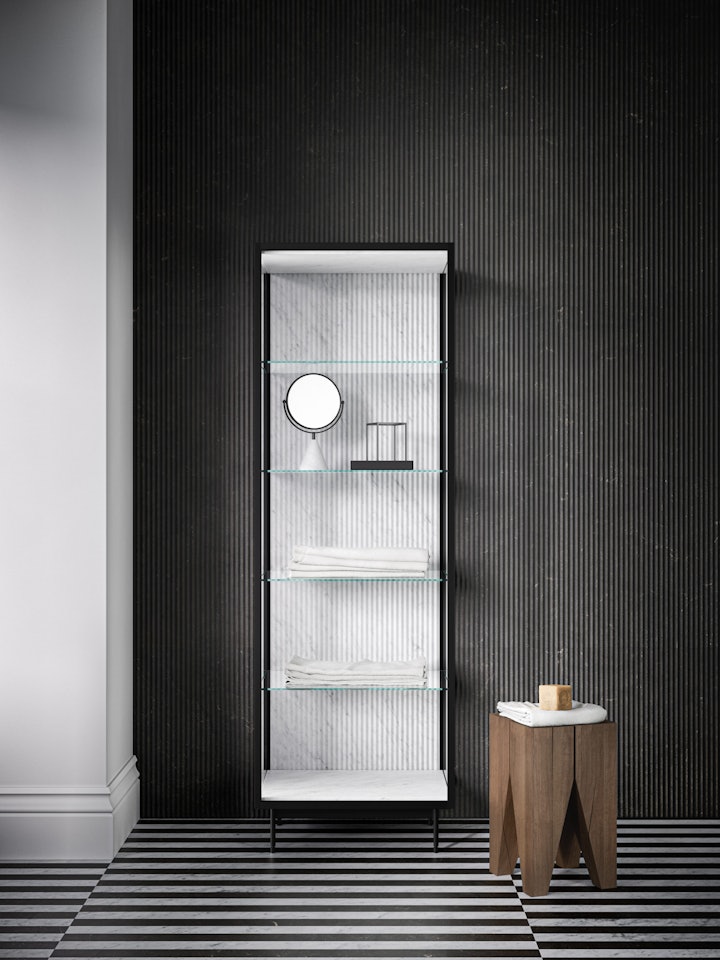
Why would you urge architects and clients to choose, firstly stone, and secondly, Salvatori?
For all the reasons I’ve just described, and then we could also add its longevity. Stone is incredibly hard-wearing – you just have to think of some of the most famous buildings or sculptures in the world to realise this.
As for why they should choose Salvatori, the first thing I would say is that we know stone inside out. My grandfather started the company almost 75 years ago so by now we’re a third-generation company and my son Gianmarco is already asking when he can get involved. But he’s only 13 so there’s time… Besides experience, I would say that it’s our ability to combine design and functionality, and to create timeless products. We also hate saying “that’s not possible” when architects show us a project, so we’ve become experts in finding out-of-the-square solutions. Our technical team are wizards at that.
I would maybe add one more reason which is more important than ever today in the construction and design sectors. That’s sustainability. We’ve already done a lot of work on that with products like our Lithoverde and Lost Stones, where we take discarded or forgotten material and give it new life. And we’re continuing to work to find more and more ways to reduce the impact on the environment.
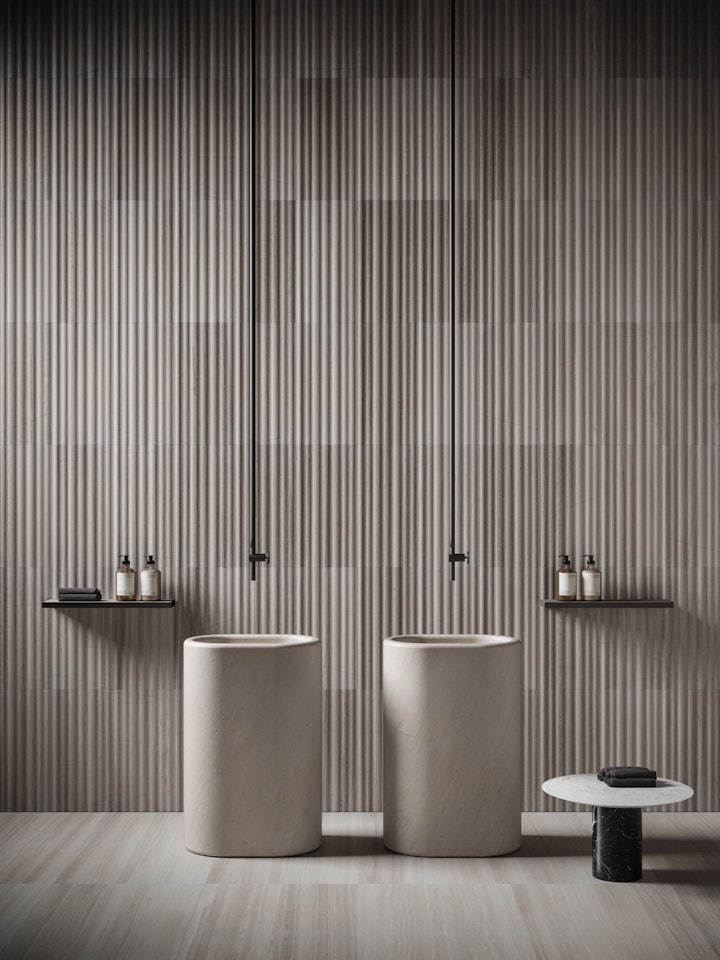
Where does your passion for innovation come from?
My father and my grandfather before him! It’s definitely in our DNA. My grandfather invented the split-face technique in the 1950s, for example. And my dad is a whizz with machines, he invented most of the machines we use to make our textures. I guess I take after him. I just love pushing the limits to see what can be done in terms of design.
Made in Italy is by now a global brand. Why do you think that is and where does Salvatori fit into that?
I think what everyone loves about Made in Italy is the fact that it generally embodies great design in all senses of the word. What I mean here is both in terms of aesthetic and functionality. But obviously, without quality to back it up, it would be nothing. So I think it’s that perfect package of quality and design. At Salvatori we live by both these principles. Every product is checked by hand before it leaves us, and of course it has to be beautiful!
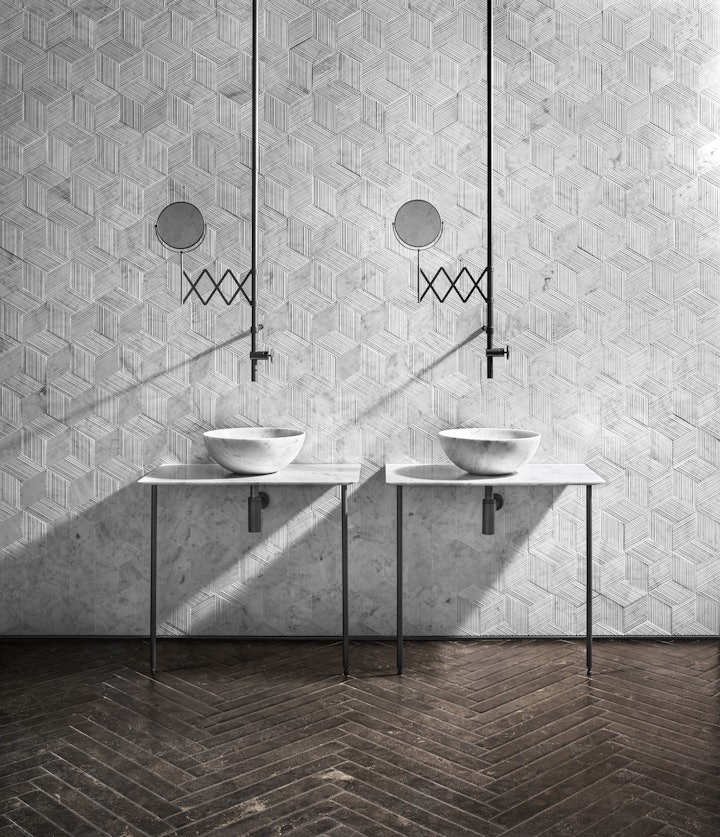
Sustainability and respect for the environment are buzzwords every brand seems to use today. How important is it to you and what does Salvatori do to make a concrete difference?
As I said before, we’re big believers in sustainability. I’ve talked about some of our products, but there are also the everyday steps we take to try and reduce the impact we have as a business, and as individuals, on the environment. It’s a long process, and it’s not just something you do once to tick a box and then forget about it. We do the big things like recycle stone and water and we’re working extremely hard on introducing eco-friendly FSC-certified packaging alternatives. Then there are also small things like no plastic bottles, coffee cups and so on in our offices but every little gesture adds up to something that makes a difference.
We’re also minimising our paper use by focusing more on our digital catalogues and reducing the number we print. That was quite a tough call because in the design and luxury sectors, beautiful printed catalogues are seen as a type of calling card for top brands.
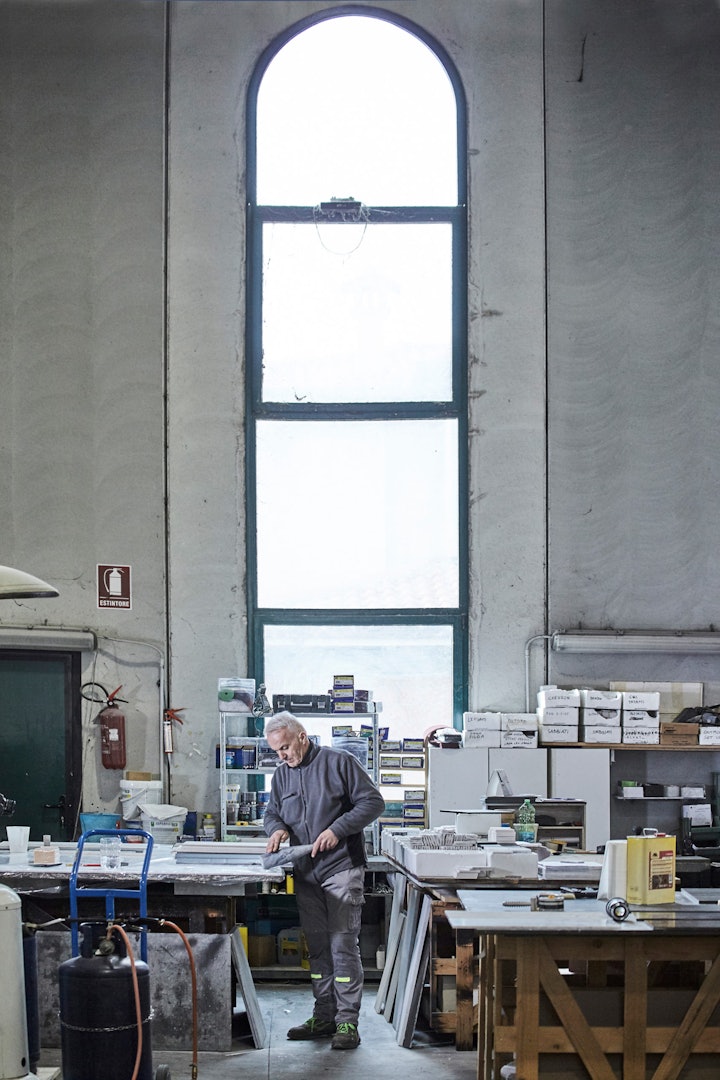
In today’s world of mass-production and technology, how difficult is it to find the balance between meeting increased demand for your products and retaining the hand-crafted, artisan approach?
Actually, for us, it’s not such a challenge. We are not a mass market product and our approach is very much quality over quantity. We do use machines because cutting stone by hand is a very long, slow process, but not even the smartest computerised machine or robot could ever replace the human touch when it comes to working with stone. Some of our guys have been with us for 30 years. They know stone inside out and can spot a defect at 100 metres. And every single piece is checked and finished by hand.
What has been the key change over the past few years in terms of the way you work or the way the Salvatori brand is perceived?
I would say that it has been the shift from being a “stone company” to a “design brand”. It was a very deliberate and conscious transition which we took when we started expanding our Home Collection. Before that we were more known for providing textured tiles, but once we started developing tables, cabinets, lights and accessories, we gained a lot of traction with the end consumer who could suddenly have a piece of Salvatori design without having to redo their floor or bathroom, for example.
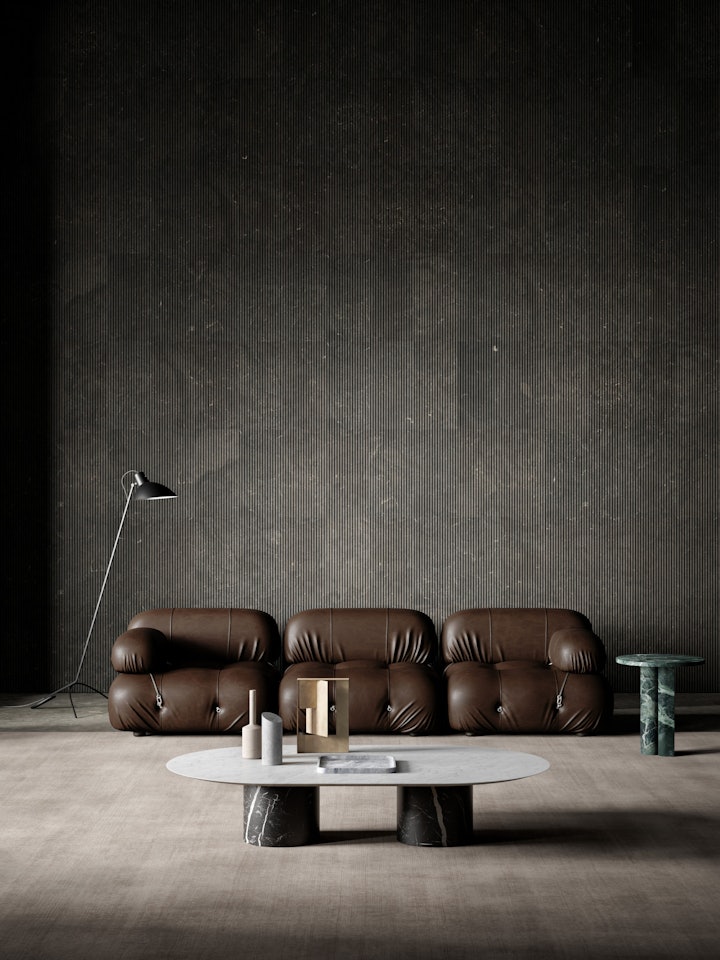
What is your vision for Salvatori over the next decade?
I can tell you what I am dreaming of, which is generally the first step to achieving something. Well, I am dreaming of a company that leads the design scene at an international level.
A company where people are happy to come to work, where everyone has a say in the way we want to reach our goals, where part of the money we make goes back to the environment and to people in need, where sustainability is at the core of everything we do, not just the products. I want us to be a company that isn’t afraid to embrace and even pioneer technology to help us close the gap between people within the organisation, the company and the outside partners, clients, suppliers we rely upon to be what we are. A company which knows how to use technology to help create more and more efficient processes and to make it easier than ever for clients to use our products.
A company where you really feel you’re part of something special.
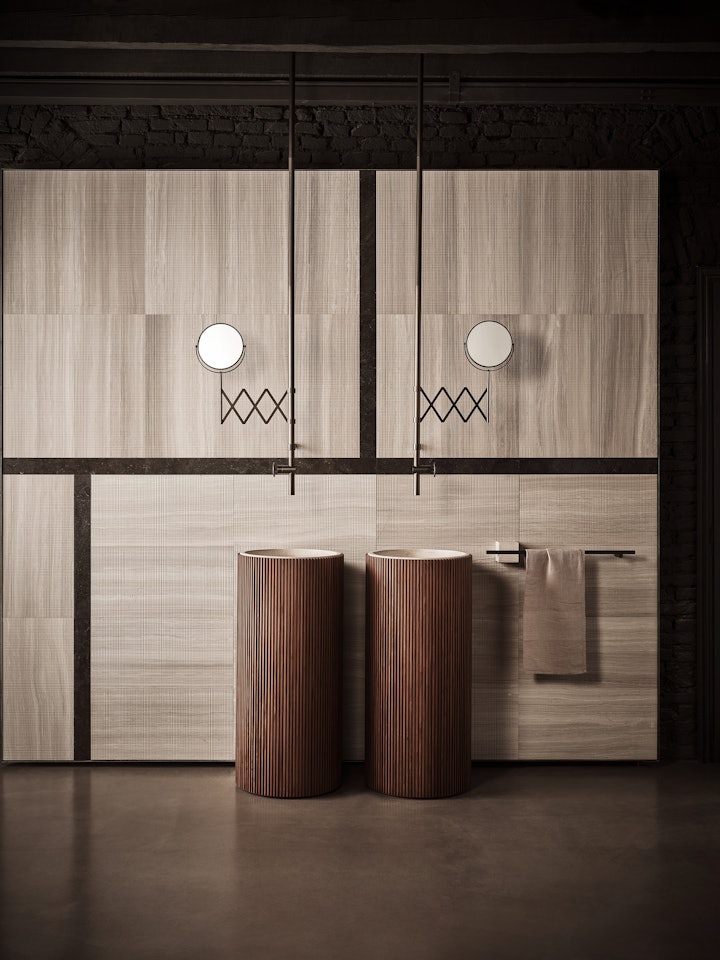
In recent years you have added other materials to your repertoire such as wood and metal. What’s the thinking behind moving away from only working with stone?
What happened is that over the years we’ve realised we actually had a sober yet refined style that we could easily deploy in other fields, like the bathroom for instance, or other objects or solutions for the home that complement them.
I realised that providing just the stone was actually not solving a common problem architects and clients have. It’s not fun for them to have to browse other stores with a piece of stone as a sample in their hand, trying to find a cabinet or a table to match the wall or floor they had chosen.
So I thought that providing a comprehensive portfolio of products, all driven by the same nuances of colours and style would probably be something that clients would really appreciate and embrace. Firstly, because it would save them a lot of time and secondly because they could embrace an idea of a “total look”. That doesn’t mean everything is part of the same collection, but it would bring a sort of cohesion so that every item in a single room would share the same, energy, shall we say, and it would all blend together and feel like a holistic space. And that includes even the scent of that room…

You often work with external designers such as Pawson, Anastassiades, Lissoni. How do you choose your partners?
These are some of the better known names, but that’s not the most important aspect. We love working with designers who share the same vision as us in terms of a simple but elegant aesthetic and enjoy a mutual exchange of ideas, as often it’s this which leads to really great products. It’s actually quite difficult to describe because often it’s about the relationship, the way we spark off each other. There’s no real rule.
What are the criteria for a product to be deemed “Salvatori worthy”?
It should be beautiful, fit for purpose and timeless. We’re not interested in brief trends or jumping on the latest bandwagon. It should also be, in some way, surprising, but in a way that makes you think “why did nobody ever think to do that before?” because once done, it seems so natural.
